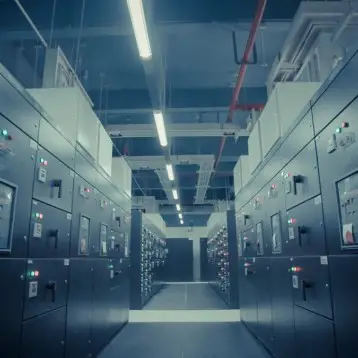|
In 2000, InPhase Technologies, a Colorado-based company, spun out of Bell Research Labs (birthplace of the transistor, among other things). During the 1990’s, Bell Labs scientists and engineers worked hard to develop the fist holographic storage technology. Following seven years of research and several important breakthroughs in media and system technologies at Bell, InPhase, a company dedicated to commercializing those technologies was created. Six more years have passed and InPhase is nearly ready to release its first commercial holographic medium, codenamed HDS5000. This first generation holographic device will support 300 GB and 20 MB/sec transfer rates and use 400-410 nm blue laser.
So how does holographic storage work and what makes it capable of squeezing 515 gigabits (Gb) of data per square inch, as recently demonstrated by InPhase? Storage of data has two aspects: read and write. According to InPhase, recording on holographic media is accomplished by splitting the light from a single laser beam into two beams, a signal beam (which carries the data) and the reference beam. At the point of intersection of these two beams in the recording medium, a hologram is formed. The storage capacity of holographic media is potentially so much larger than conventional media since, unlike conventional media (CD, DVD, etc.), which utilize only the surface area of the medium (or, at best, another layer), holographic media utilize the full depth of the medium.
|
InPhase’s website explains that the process of encoding data onto the signal beam is accomplished by a device called a spatial light modulator (SLM). The SLM translates the electronic data of 0’s and 1’s into an optical “checkerboard” pattern of light and dark pixels. The data is arranged in an array of approximately one million bits. At the point of intersection of the reference beam and the data-carrying signal beam, the hologram is recorded in the light-sensitive storage medium. A chemical reaction occurs in the medium when the bright elements of the signal beam intersect the reference beam, causing the hologram to be stored. By varying the reference beam angle, wavelength, or media position, many different holograms can be recorded in the same volume of material.
In order to read the holographic data, the reference beam deflects off the hologram, thus reconstructing the stored information. This hologram is then projected onto a detector that reads the data in parallel. According to InPhase, this parallel readout of data affords holography its fast transfer rates.
Q: When should we expect to see the first holographic storage devices and what will be their target audience and price range?
A: Our first commercial products will be released in late 2006 and will target the IT archive and professional video markets. Pricing has not yet been finalized, but we will not be pricing to compete in the consumer space.
Q: The HDS5000 will have a transfer rate of only 20 MB per second, about the same as a 16X DVD. The problem is that DVD has only 4.5-8.5 GB while your product has 300 GB, leading to a relatively long burn time. Do you see this as a problem?
|
A: You are correct in stating that our transfer rate will be 20 MB/sec at first release. Subsequent releases of our product will have significantly faster transfer rates, up to 120 MB/sec by 2010. In the archive and professional video markets that we are initially targeting, media capacity and data access time are at least as important as transfer time. By data access time, I mean the length of time it takes to access a file or data set on a specific piece of media. With mid-range tape today (such as LTO) this takes an average of about 60 seconds. With InPhase holographic storage, worst case access time is 250 milliseconds to access data anywhere in the 300 GB capacity of the media.
Q: When do you expect to release rewritable holographic media, and do you expect it will replace Blu-ray and HD-DVD any time soon?
A: We expect to bring rewritable holographic products to the market in 2008. Replacement of Blu-ray or HD-DVD, although not a specific target for us, could eventually occur depending on pricing of our technology.
Q: You recently discussed another future product called HDS4000 that will use red laser (630-750 nm) and ROM media. Will this product also support 300 GB capacities like the HDS5000 and who would require such a huge amount of space in a ROM media?
|
A: InPhase actually has two development efforts going on in parallel. HDS5000 uses a blue laser and is a recordable or WORM (Write Once Read Many) technology. This product is targeted at the IT archive and professional video markets. As you point out, the smaller wavelength is one of the ways we’re able to get very high densities. HDS4000 uses a red laser and is a ROM technology – what we now call H-ROM or Holographic-ROM. We made an announcement about this just a few months ago but this does not take the place of HDS5000 products: the two will coexist. HDS4000 H-ROM technology is targeted at low-end, consumer applications and it will not come to the market until 2008. Its capacity will be far smaller than 300 GB, partly because of the use of red laser vs. blue laser and partly because physically the media is much smaller. We are already working with a consumer products company that is sponsoring the development of this product.
|
A: Our go-to-market plan is to OEM to other storage or consumer product companies. You are correct in that we will do all of the R&D ourselves, but we will also manufacture the complete product and resell the complete product to OEMs. The OEMs will add their brand names and resell through their existing channels of distribution.















